The best places to see elephants in Africa
06.06.2019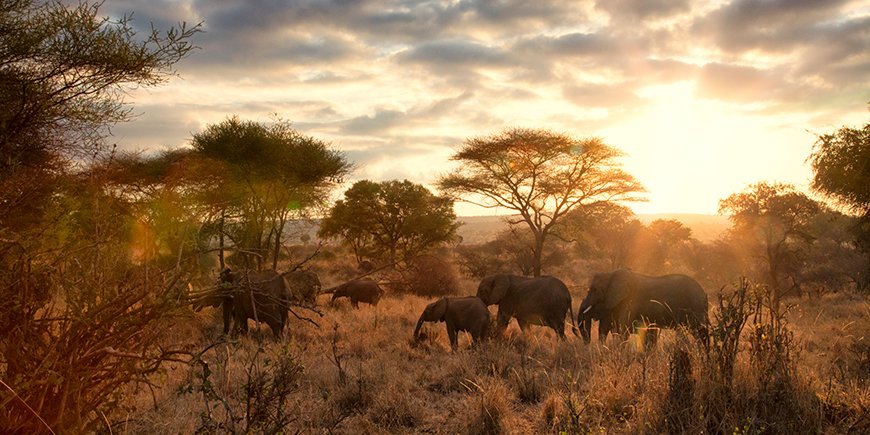
The elephant is a fascinating animal.
It is the world’s largest land mammal. It weighs up to 6 tonnes and it can live to the ripe old age of 70.
Elephants used to live all over Africa, but today elephants are only found in 20 or so African countries.
Although the elephant population has become much smaller over the last 200 years, the elephant is still a common sight on safari.
We’ve put together a list of some of the best places to see elephants in Africa.
Where would you like to experience elephants?
Chobe National Park, Botswana
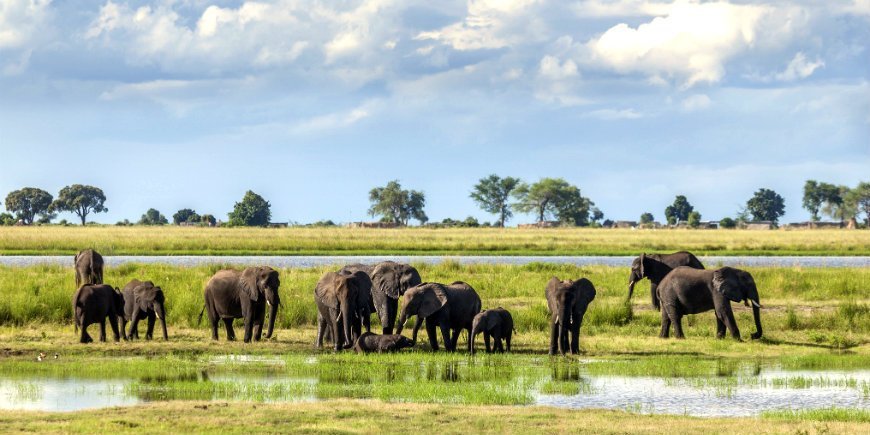
Around 130,000 elephants live in Botswana, making it the country with the highest concentration of elephants in Africa.
Chobe National Park, in northern Botswana, is estimated to be home to no fewer than 50,000 of Botswana’s elephants during Botswana’s dry season.
The diverse ecosystems of the national park and, to a large extent, the Chobe River, which runs through the north-eastern section, help create the varied nature found here.
The river is the reason that huge herds of elephants come to the park as it assures them food and drink, especially during the dry season from May to October So you can experience the many elephants by the river, where they come to drink water, eat the nearby green grass and cool down.
The Okavango Delta in Botswana
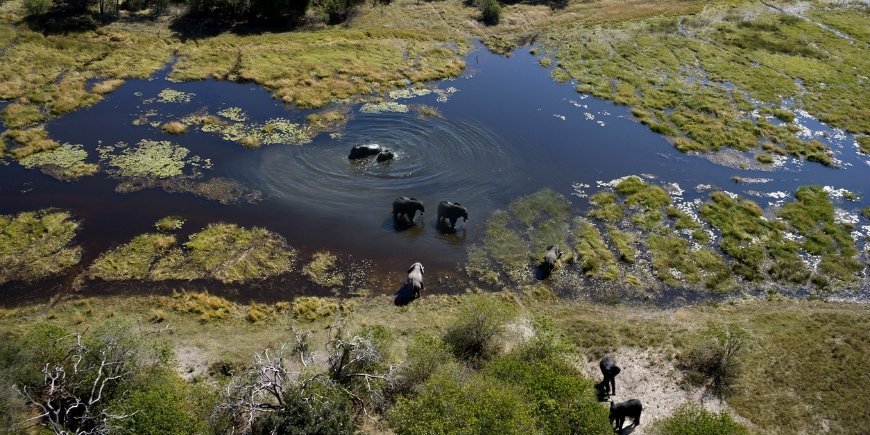
Another of Botswana’s areas of natural beauty is the 14,000 km2 Okavango Delta, which is located in north-western Botswana. In the dry season, thousands of the country’s 130,000 elephants migrate to the delta, making Okavango one of the best places to see elephants in Africa.
The Okavango Delta is one of the largest wetlands in the world, and the annual floods are one of the reasons the delta is a UNESCO World Heritage Site today.
At the beginning of the year, it starts raining in the highlands of Angola. The rivers burst their banks and the surrounding areas cannot soak up more water. The rainwater begins a long journey south. Within a month or two, it hits the 1,600-km-long Okavango River, which also gradually begins to overflow. Over the next few months, the water that started its journey in Angola’s highlands spreads out into the otherwise arid Kalahari Desert and becomes what we know as the Okavango Delta.
The Delta is a great source of water in the area, and is also home to some of the world’s most endangered mammals, including cheetahs, white and black rhinos, the African wild dog and lions. And it goes without saying that you can see a lot of elephants here, both those that live here all year round and those that migrate here during the dry season.
Tarangire National Park in Tanzania
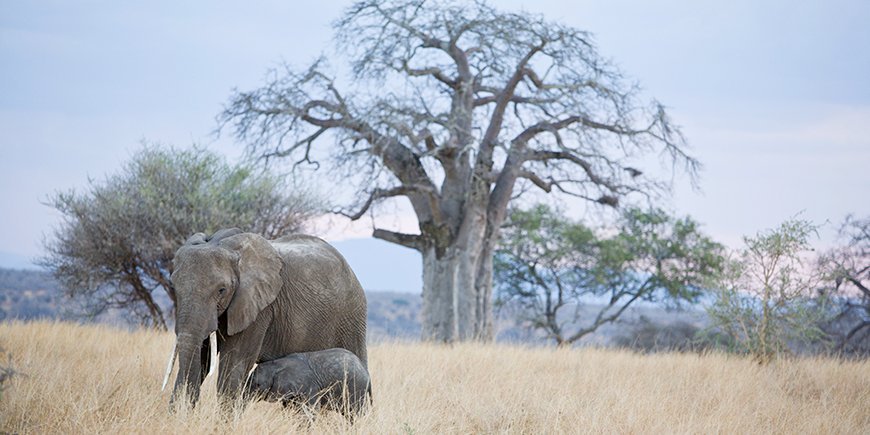
Tarangire National Park is located in north-eastern Tanzania and is known for its large concentration of elephants.
The park has a varied landscape, which particularly attracts the elephants due to the Tarangire River and the large, water-storing baobab trees.
The elephants move around in herds, and on a game drive you will often be able to spot huge herds of hundreds of elephants. In fact, the nature and terrain of the park also allow you to get right up close to the large mammals and see them cross the savannah from first row seats.
You will often also be able to see the elephants near the baobab trees, which they use to sharpen their tusks. The trees can also hold huge volumes of water, which the elephants sometimes get to by pulling the bark off the tree and sucking out the water.
Amboseli National Park in Kenya
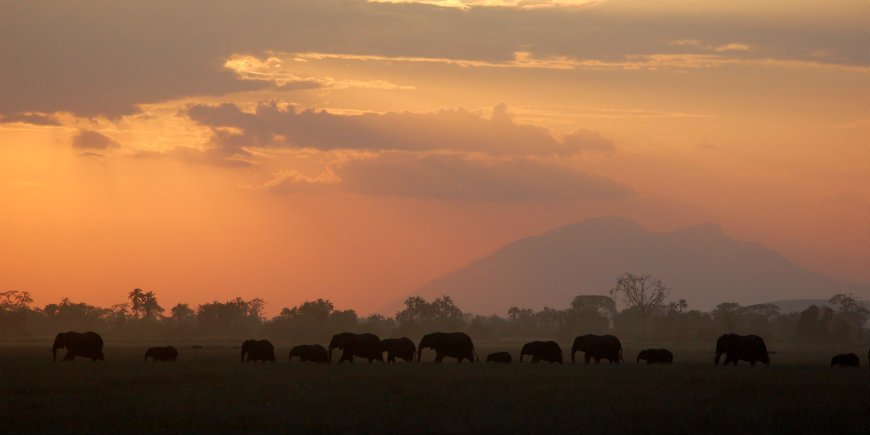
Amboseli National Park is one of the most popular national parks in Kenya.
Although Amboseli is also one of the country’s smallest national parks, you are guaranteed experiences that will not allow you to forget that you’re in Africa.
The park is close to Tanzania’s border, just north of Kilimanjaro, and on a clear day on your game drives in the national park, you will be able to see Africa’s iconic mountain on the horizon.
Kilimanjaro is also the source of the water found in the park. Meltwater from the mountain flows underground before surfacing in Amboseli. These sources provide drinking and bathing water for the elephants and other animals in the national park.
In Amboseli, there are around 1,000 elephants, which often move around in large herds. The park’s terrain is flat and sparsely vegetated, making it is easy to spot the elephants slowly making their way through the landscape.
Amboseli was one of the first places that elephants were studied. So many of the elephants living here have been here for many years and have grown very old. So, if you’re lucky, you might catch sight of some of these old elephants whose tusks have grown so big they almost reach the ground.
Kruger National Park in South Africa
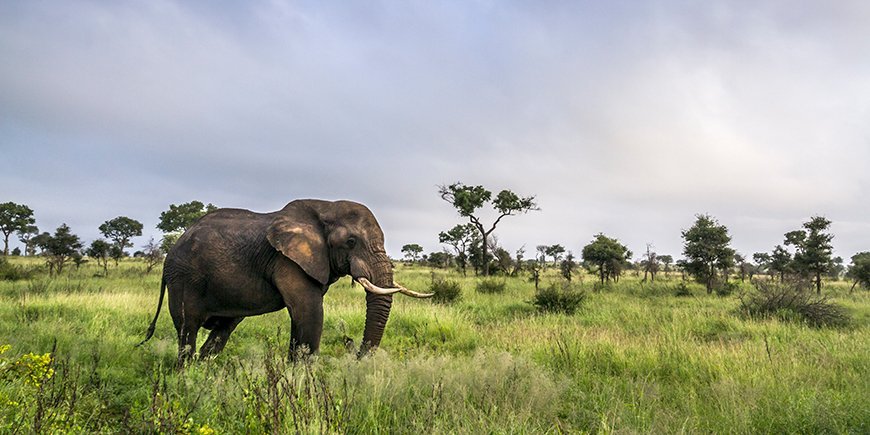
Kruger National Park is South Africa’s largest game reserve, covering an area of around 19,500 km2. More than 100 years old, the park is the oldest national park in Africa and also one of the most popular tourist destinations in South Africa.
The national park is known for having many different kinds of mammals and many of each species.
There are estimated to be around 11,000 elephants in Kruger National Park, which makes this national park in South Africa an ideal destination if you want to get right up close to them.
The park offers you every opportunity to see elephants all day long.
They move around a lot in the morning and evening, and when it’s hot in the afternoon, they stay close to the national park’s lakes and rivers to cool down. You might even be lucky enough to see them bathe.
There are many great places to see elephants in Africa, and some tours provide unique experiences you won’t find elsewhere.
These are our suggestions for the best places to see elephants, but if you are still unsure about which tour to choose, please contact our travel consultants who are on hand to guide you.
TourCompass – From tourist to traveller
-
General Info
Receive all the latest news and offers delivered to your inbox!
Registered in England.
Registered Office:
Nucleus House 2
Lower Mortlake Road
Richmond, TW9 2JA
Company no.: 11454726

E-mail: info@tourcompass.co.uk
ATOL protected no. 10558.
ABTA member no. Y6104.
Read more.